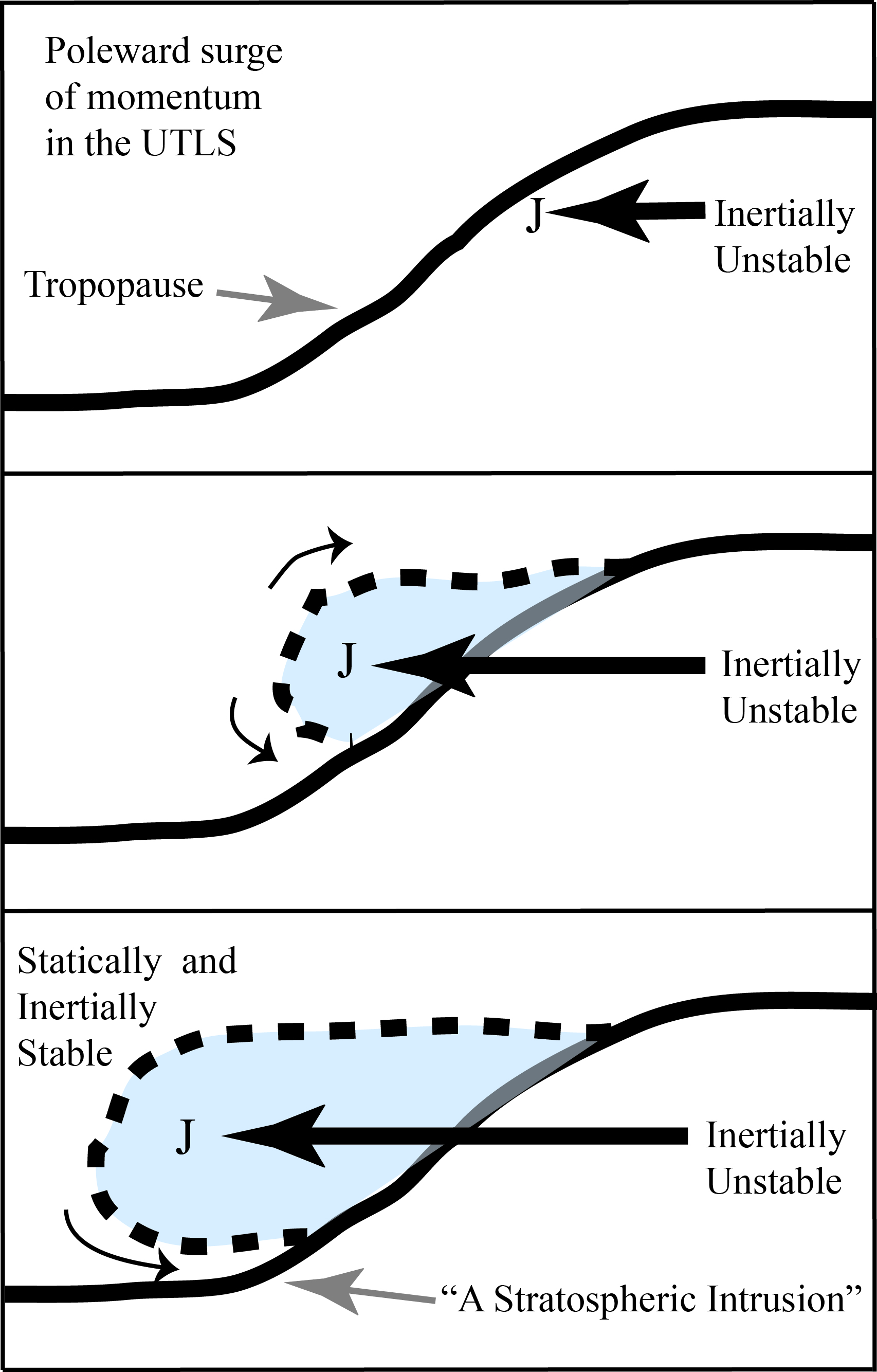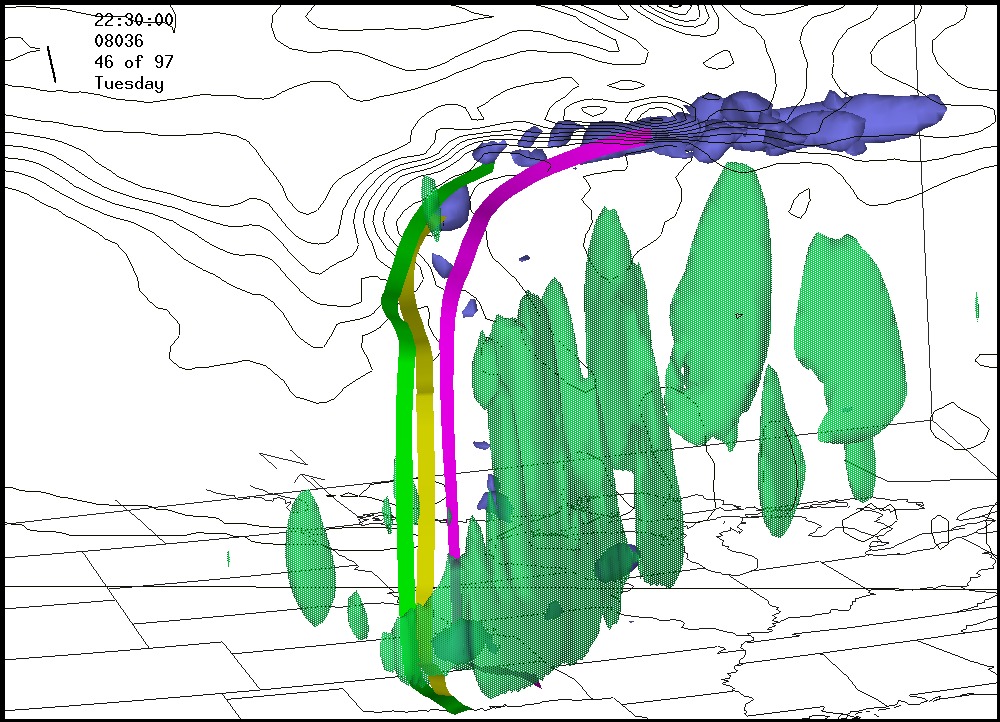Inertial Instability Theory - Introduction
Mesoscale regions of negative EPV air originate upstream in the boundary layer. As they are transported through convection, EPV becomes increasingly negative toward the tropopause. In association with the arrival of each large negative EPV anomaly, a locally-enhanced poleward surge of the subpolar jet occurs, characterized by high turbulent kinetic energy and low Richardson number. Isosurfaces of wind speed show that gravity waves emanating from inertially unstable regions modulate both jets simultaneously. It is shown that inertially unstable convective outflow surges can facilitate STE locally by fostering poleward acceleration in the UTLS, turbulent entrainment, and enhanced folding of tropospheric air over stratospheric air underneath the subpolar jet.
The figure to the right is a schematic diagram of a "stratospheric intrusion" formed by relative motion, in this case a poleward surge of air in the UTLS (time increases downward). Inertial instability aids the poleward intrusion of air into and over the extratropical stratosphere, as the jet strengthens and moves poleward, overriding a thin layer of stratospheric air. Recirculation around the nose of the poleward surge can aid filamentation of the intrusion. Eventually the warm, light and inertially stable lower stratosphere limits further poleward motion.

